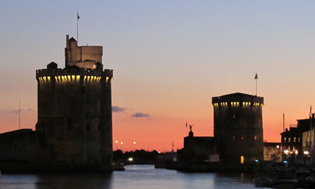 At the ‘Salmon Summit’ in La Rochelle, France, scientists confirmed that wild Atlantic salmon are dying at sea in alarming numbers. Southern stocks including some in North America and Europe are threatened with extinction.
At the ‘Salmon Summit’ in La Rochelle, France, scientists confirmed that wild Atlantic salmon are dying at sea in alarming numbers. Southern stocks including some in North America and Europe are threatened with extinction.
The Atlantic salmon is a unique iconic species and an indicator of healthy environments from pristine upland streams to vast oceanic feeding grounds in the North Atlantic.
Utilising new technologies, scientists are starting to unravel the mysteries of salmon in the ocean and providing managers with management options to save this iconic species.
Dr Malcolm Windsor, Secretary of NASCO, said ‘the goal of the SALSEA Programme, a unique collaboration between international scientists, is to increase understanding of how salmon use the ocean, where they go, how they utilise currents and the ocean’s food resources and what factors influence their migration and distribution at sea’.
This Programme used innovative new technologies, including genetic fingerprinting, to map the domain of salmon throughout this vast ocean and identify factors affecting its survival. This has revealed, for instance, that some of the food chain of salmon is moving further north, seemingly in response to a warming ocean.
Because we now know where salmon are at sea, management measures can be implemented to limit impacts on them, such as fisheries for other species.
A clear message to managers in this challenging global environment is to ensure the maximum number of healthy wild salmon go to sea from their rivers.
Keeping salmon populations abundant involves addressing impact factors in freshwater, estuarine and coastal waters. These include degraded freshwater habitat, barriers to migration, over-exploitation and salmon farming.
Dr Windsor continued ‘unless we adopt conservation measures identified during the Salmon Summit there is a real risk that southern stocks will become extinct by 2040’.
Notes for Editors:
NASCO is an intergovernmental organization formed by a treaty in 1984 and is based in Edinburgh, Scotland. Its objectives are the conservation, restoration and rational management of wild Atlantic salmon stocks. Its International Atlantic Salmon Research Board (IASRB) was established in 2001 to promote collaboration and cooperation on research into the causes of marine mortality of Atlantic salmon and the opportunities to counteract this mortality.
The Parties to the NASCO Convention are: Canada, Denmark (in respect of the Faroe Islands and Greenland), European Union, Norway, Russian Federation and the United States of America. There are 35 non-government observers accredited to the Organization.
SALSEA is an international programme of co-operative research, funded through a public/private partnership, designed to improve understanding of the migration and distribution of salmon at sea in relation to feeding opportunities and predation.
The ‘Salmon Summit’, a major international symposium Co-Convened by NASCO and the International Council for the Exploration of the Sea (www.ices.dk), and entitled ‘Salmon at Sea: Scientific Advances and their Implications for Management’, was held at L’Aquarium, La Rochelle, France, during 11-13 October 2011.
130 scientists and managers involved in research and management of salmon in the North Atlantic, North Pacific and Baltic Sea participated in the Summit.
The Total Foundation was a major contributor to the SALSEA Programme (through the SALSEA Merge project in the North-East Atlantic) and was a sponsor of the ‘Salmon Summit’.
For further information contact:
Dr Malcolm Windsor
NASCO
tel +44 (0)131 228 2551 email hq@nasco.int
www.nasco.int
www.salmonatsea.com
